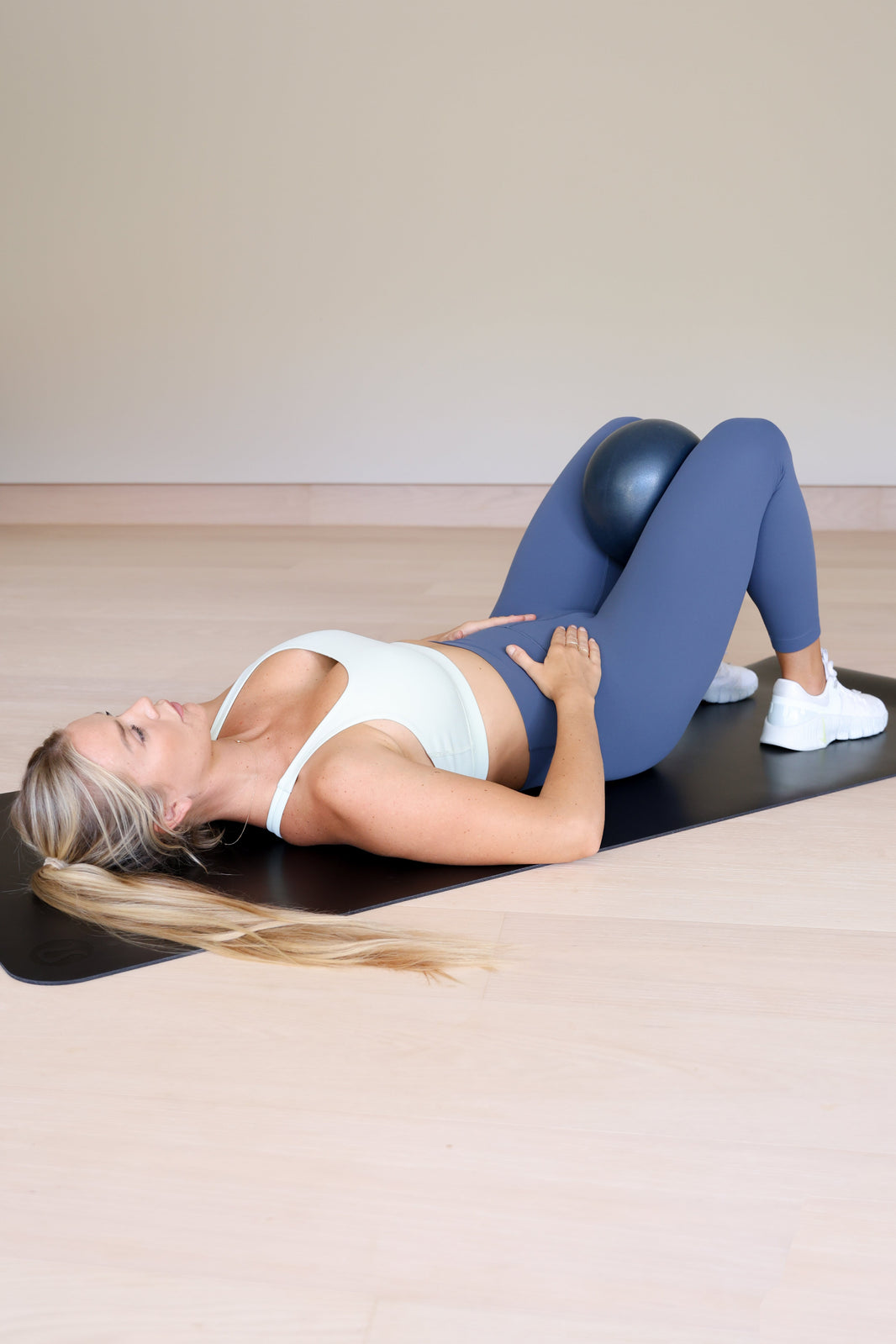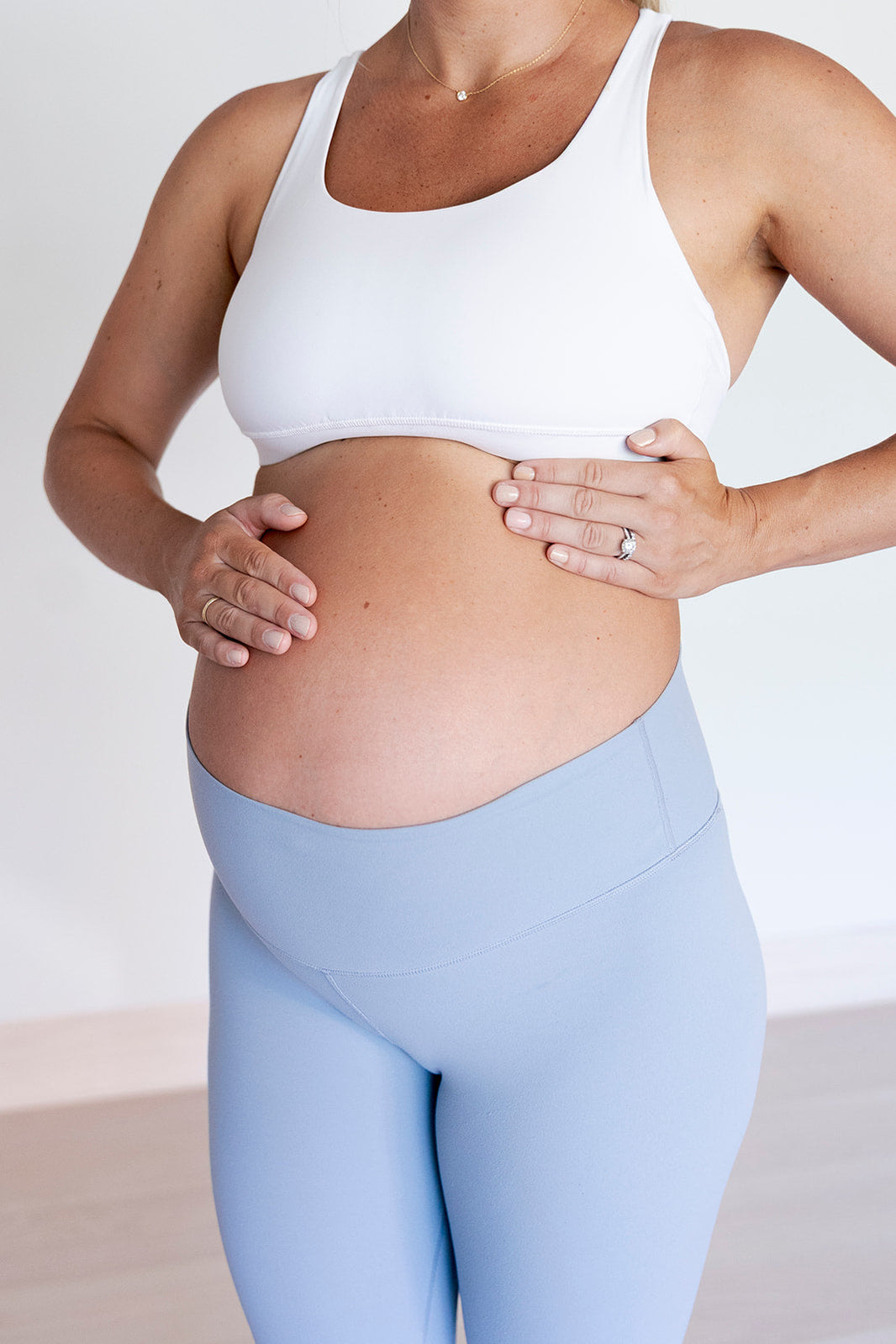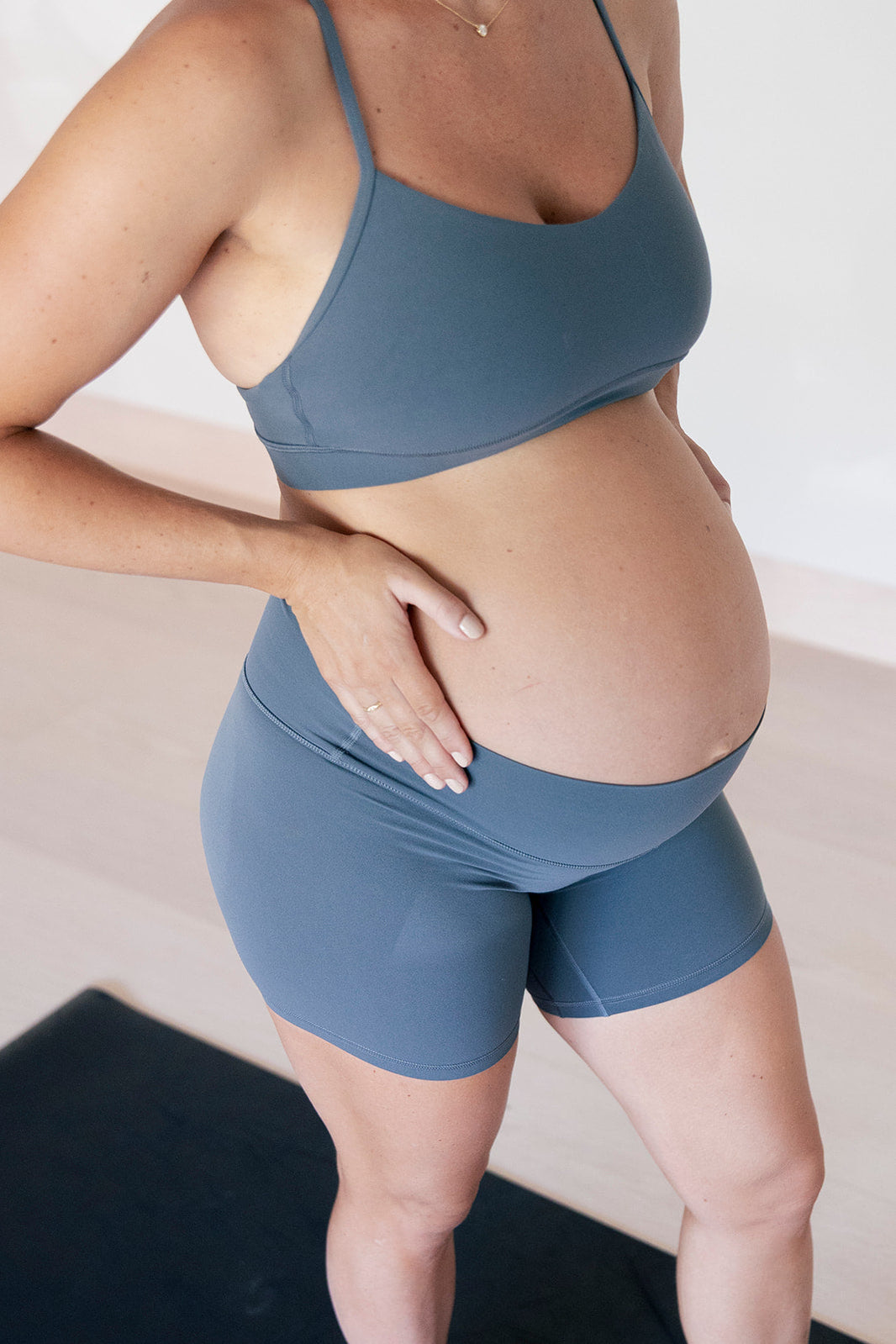Congratulations, Mama! Your body has done something absolutely incredible. Growing, carrying, and birthing a baby is a huge transformation — and now, the next important phase begins: healing.
Let’s talk through what’s happening inside your body during these early weeks and give you a step-by-step plan to begin reconnecting with your core and pelvic floor safely and intentionally. Let's dive in!
What's Happening in Your Body Postpartum?
Before we get into the movement plan, it's important to understand some of the major changes your body is going through right after birth:
Lochia Changes
After delivery, your body begins shedding the lining of the uterus — a discharge called lochia. It starts off bright red and heavy like a very strong period, then gradually changes to pink, brown, and eventually yellow-white over several weeks. This process is a normal and important part of healing.
Increased Urination and Sweating
You might notice you're sweating more than usual and running to the bathroom often in the first couple of weeks. This is your body's way of expelling the extra plasma and fluids that built up during pregnancy. During pregnancy, your blood volume increases by about 50% to support your baby — and now your body is working hard to get rid of that extra fluid.
Cervix Closing and Uterus Shrinking
After birth, your cervix, which opened to allow your baby to be born, begins to gradually close. Similarly, your uterus starts the process of involution — shrinking back down to its pre-pregnancy size. By around six weeks postpartum, the uterus is usually fully contracted and the cervix is mostly closed.
While external healing can happen quickly, internal healing takes longer. Your pelvic floor, core, and connective tissues need time and care to rebuild strength and function.
Bladder Leakage in the Early Weeks
Bladder leakage is a common experience during the first month postpartum. The pelvic floor muscles and deep core were stretched and impacted during pregnancy and delivery, making it harder to maintain control under pressure like coughing, sneezing, or laughing. Some early bladder leakage is considered normal as the body recalibrates. However, by around the four-week mark, you should notice significant improvement. Ongoing bladder leakage beyond one month may be a sign that your pelvic floor needs extra support, and working with a pelvic floor physical therapist can be incredibly helpful to restore full control and confidence.
Your Step-by-Step Core and Pelvic Floor Healing Plan
Week 1: Light Breathwork for Pelvic Floor Mobility and Diaphragm Reconnection
Focus:
- Reconnect with your breath.
- Promote gentle pelvic floor mobility.
Why: Your diaphragm, core, and pelvic floor work together as a pressure system. Pregnancy and birth disrupt this system, so restoring 360° rib cage breathing helps reset the foundation.
What to do:
- Practice 360° breathing several times a day in various positions.
- Focus on expanding your ribs to the sides, back, and front.
- Allow the pelvic floor to naturally relax with each inhale.
Key Reminder: No need to "engage" or "squeeze" anything yet — just breathe deeply and gently.
Week 2: Deep Core and Pelvic Floor Activation Utilizing Exhalation
Focus:
- Begin lightly engaging your pelvic floor and deep core.
- Learn pelvic brace activation.
Why: After delivery, the connection between your brain and your deep core muscles and pelvic floor needs to be reestablished.
What to do:
- During an exhale, gently lift the pelvic floor (like you’re stopping gas and urine) and draw the lower belly slightly inward.
- Release completely on inhale.
Exercises:
- Pelvic brace in supine, sidelying, and quadruped
- Use a pilates ball for adductor activation and deep core activation
Key Reminder: This is about reconnection, not about squeezing hard. Think "gentle hug" to your core and light squeeze and lift of your pelvic floor muscles
Week 3: Gentle Hip and Glute Work with Postural Alignment
Focus:
- Strengthen surrounding muscles (hips and glutes).
- Improve alignment to support healing.
Why: The glutes and hip muscles work alongside the pelvic floor to create stability. If they are weak, the pelvic floor often has to work harder.
What to do:
- Continue pelvic brace activation with exercises.
- Add gentle hip-focused exercises with good posture.
Exercises:
- Supine bent knee fallouts
- Sidelying hip abductions
- Quadruped arm lifts
Key Reminder: Prioritize alignment or rib cage and pelvis over range of motion. Keep pelvic brace coordinated throughout movements. Small, controlled movements matter most right now.
Week 4: Functional Core Engagement and Movement Patterns
Focus:
- Coordinate your pelvic brace with functional movements.
- Begin practicing basic daily movements with intention.
Why: The core and pelvic floor need to work together during everyday tasks like sitting, standing, lifting, and twisting. Building this foundation early prevents injury and long-term pelvic floor dysfunction.
What to do:
- Continue breath and pelvic brace work.
- Introduce functional patterns with breath coordination.
Exercises:
- Sit-to-stand with pelvic brace (exhale to rise)
- Hip hinges (mini body weight deadlifts) with good core control
- Light single-leg balance drills
Key Reminder: Exhale on effort! (e.g., exhale when you stand up or lift.)
Week 5: Build Dynamic Stability and Core Endurance
Focus:
- Increase the endurance of your core and pelvic floor muscles.
- Strengthen your base with more dynamic movement.
Why: Stability and endurance are crucial before adding heavier strength or impact activities. Dynamic stability means your core and pelvic floor can stay active while your limbs move.
What to do:
- Continue connecting breath with movement.
- Add slightly more challenge to exercises.
Exercises:
- Step-ups with pelvic brace
- Baby-wearing squats
- Lateral banded side steps
Key Reminder: Movements should feel moderately challenging — but you should still be able to talk and breathe easily.
Week 6: Low-Level Impact Preparation with Strengthening the Lower and Upper Body
Focus:
- Prepare the body for more dynamic movement.
- Maintain strong pelvic brace activation during bigger exercises.
Why: By six weeks, the uterus has mostly shrunk back down, the cervix is closed, and initial tissue healing has occurred. However, your pelvic floor and core endurance still need to build strength to tolerate impact and heavier loading.
What to do:
- Focus on pelvic brace endurance during bigger strength exercises.
- Begin low-level impact preparation carefully.
Exercises:
- Heel raises for impact prep
- Quick Eccentric squats for impact prep for eventual jumping
- More difficult core stability work for strength and endurance
- Single leg strengthening necessary for more dynamic tasks that motherhood requires
Key Reminder: Even after six weeks, it’s not time for running, jumping, or heavy lifting unless you've built the foundation to tolerate it — stay patient and smart.
How to Know if You Need Extra Help
Sometimes, despite doing all the right things, your body might need more support — and that's okay!
Signs that you are moving too fast with movement and should progress slower:
- Bladder or bowel leakage that persists past early healing
- Feeling of pelvic heaviness or bulging
- Coning or bulging along the abdominal midline
- Pain during movement, sitting, or intercourse
Your postpartum recovery is not a race. It's a rebuilding journey that deserves patience, intention, and lots of self-compassion.
Every breath, every small activation, every functional movement you work on now is setting the foundation for everything you want to return to later — running, lifting, chasing after your growing baby with strength and confidence.
Healing is happening, even when you can't feel it every day. Trust the process, celebrate the small wins, and know that you are doing an incredible job, Mama!








